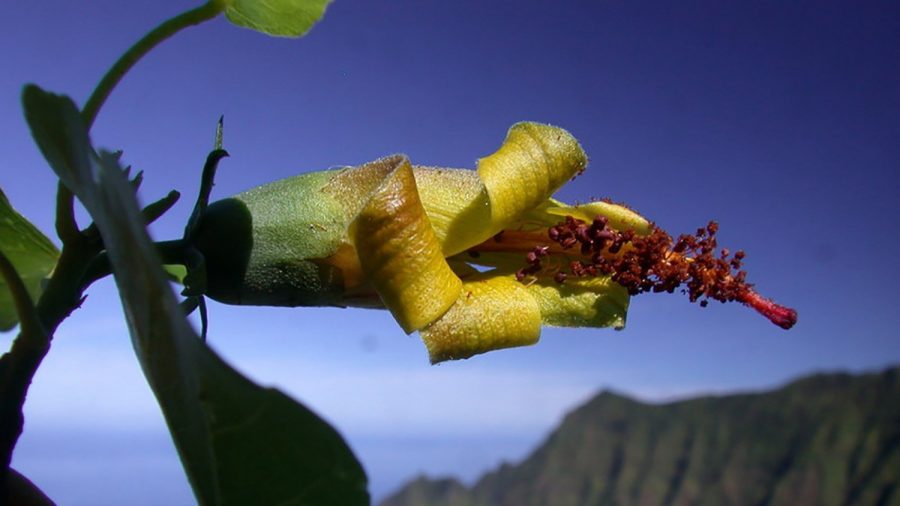Researchers dispatched a drone into the Hawaiian skies to observe an extremely biodiverse area on a remote part of Kauai’s Kalalau Valley. The scientists soon realized they had rediscovered a flower species that was thought to be extinct.
According to a statement from the National Tropical Botanical Garden, Hibiscadelphus woodii was discovered on a vertical cliff face. Most sections of this area of the valley are inaccessible to humans because of the steep landscape.
NTBG has been using drone technology for the past two and a half years to get a look at the unique flora.
Hibiscadelphus woodii, known only from the island of Kauai, was believed to have gone extinct until NTBG researchers…
Posted by National Tropical Botanical Garden on Tuesday, April 16, 2019
Dr. David Lorence, director science and conservation for the garden, said, “This incredible rediscovery was made possible by our staff using drone technology and was supported by a grant from the Mohamed bin Zayed Species Conservation Fund. Drone technology greatly facilitates botanical surveys in rough terrain areas.”
Before the discovery, the plant was last seen alive in 2009.
H. woodii, which belongs to the Hibiscadelphus family, was first discovered in 1991 by NTBG botanists in the same valley.
The steep cliffs where the Hibiscadelphus woodii was rediscovered by NTBG researchers searching for rare plants with a drone. See the video here: https://www.youtube.com/watch?v=vLqDmrF9ruM
Posted by National Tropical Botanical Garden on Tuesday, April 16, 2019
The plant grows in a shrub or small tree and produces bright yellow flowers, which turn purple or maroon as it ages.
The species was named and published in 1995, raising the number of Hibiscadelphus at the time from six to seven species. An eighth species was discovered on Maui in 2012, and prior to the rediscovery, only two species still exist in the wild, the statement said.
H. woodii faces threats from invasive plants, animals and rock slides. Falling boulders were a large factor in the extinction of the known colony in the late 1990s.
The NTBG said in its statement that the rediscovery offers new hope that other species that are “thought to be extinct” may still survive in hard to access areas.
Ben Nyberg, GIS coordinator and drone specialist for NTBG, said, “Drones are unlocking a treasure trove of unexplored cliff habitat, and while this may be the first discovery of its kind, I am sure it won’t be the last.”
Extinct flower found by the ‘Indiana Jones’ of U.S. botanists https://t.co/bVXR9ETrtw pic.twitter.com/Phohc2qAJi
— TorontoStar (@TorontoStar) April 3, 2016
![]()


